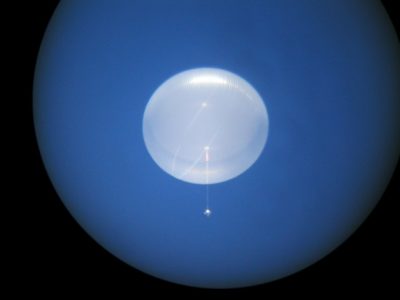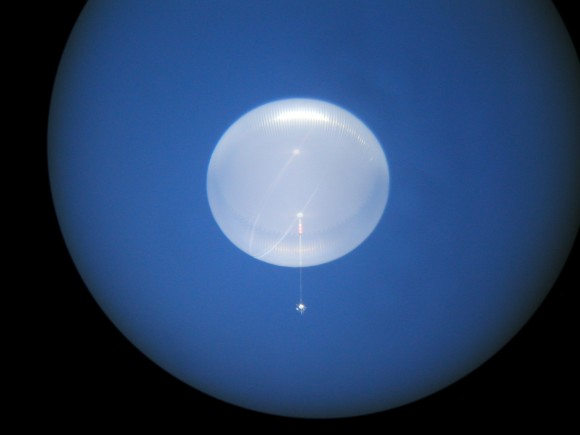

It’s been a surprisingly busy year for solar geoengineering research.
In late December, Congress appropriated $4 million to NOAA to study the influence of atmospheric aerosols on climate, with an eye on assessing “solar climate interventions.” In March, Australian scientists ran a trial of a cloud-seeding technology on the Great Barrier Reef that may one day be used for “marine cloud brightening.”
And then this summer, an independent Advisory Committee announced its first steps toward governance for a potential solar geoengineering field experiment out of Harvard University –representing a remarkable investment in participatory governance of controversial research.
Several UCLA Law faculty members recently submitted a comment letter on the proposal, praising the governance framework as a whole and suggesting ideas for creating a meaningful, appropriate public engagement process.
Solar geoengineering and a world of worry
Harvard’s Stratospheric Controlled Perturbation Experiment (“SCoPEx”) aims to investigate how aerosols behave in the stratosphere. The team proposes to fly a balloon to a height of about 65,000 feet, which would then spray about two kilograms of finely ground ice, calcium carbonate (a.k.a. limestone), and perhaps other materials into the surrounding air. Instruments on the balloon would then observe the dispersion of the aerosol plume and its chemical and radiative effects. The data could help improve climate modeling and scientific understanding of solar geoengineering.
SCoPEx is generating some controversy, despite its tiny scale and negligible physical risks. Forty environmental and civil-society groups have expressed categorical opposition to SCoPEx. For these stakeholders, experiments like SCoPEx violate global norms and risk distracting political leaders from the difficult work of cutting greenhouse gas emissions.
SCoPEx is not the first field experiment on solar geoengineering. But it is the first to seriously grapple with the disruptive character of research and the long tail of potential policy, societal, and geopolitical risks. In light of these concerns, the research team and Harvard took the extraordinary step of empowering an independent Advisory Committee to advise on the experiment’s governance process.
Getting public engagement right
The Advisory Committee invited public comment on its governance proposal, and several faculty members at UCLA Law (including myself) submitted our thoughts. We praise the Advisory Committee for the thoughtful approach to governance and their requiring scientific and technical review, legal review, appropriate financial disclosures, and meaningful public engagement. These elements are necessary for effective nonstate governance of solar geoengineering research.
Our comments focus on public engagement, a challenging aspect of research governance. Public engagement is an opportunity for research teams to inform and educate people on projects that may affect them. These stakeholders in turn may share their views and potentially influence project decisions. Public engagement can build legitimacy, better align activities with democratic values, and improve project outcomes. This is why it is widely considered a cornerstone of good governance of solar geoengineering research.
We propose a two-tier structure for public engagement. First, there should be a high-level, permanent, free-standing public engagement process to explore the broad societal implications of solar geoengineering. This would include its potential effects on climate change policy, international cooperation, geopolitics, and global development, justice, and equity. The Advisory Committee could design and pilot consultation programs in the service of building this broader discourse. It could also sketch a proposal of this permanent platform, possibly including its mandate, setting, and membership. Importantly, this broader engagement process should not be the responsibility of a single research institution.
The second tier of public engagement concerns SCoPEx itself – and, by serving as a role model, possibly other solar geoengineering experiments. In light of the limited resources of most research teams, the public engagement needs of individual experiments would be more circumscribed. Public engagement should be tailored to stakeholders who might be directly affected by research activities.
Both levels of consultation and public engagement are essential, but they serve different purposes. They should be distinguished and handled separately.
***
We are heartened by the institutional resources dedicated to SCoPEx’s oversight: The social, political, and environmental concerns about solar geoengineering research are of utmost importance. This is a promising step toward building the governance the world needs.
As it happens, the Advisory Committee is seeking comment on an update to its governance framework. If you’re interested in commenting or just want to learn more, you can visit their website.
The post UCLA Law Faculty Weigh In on Solar Geoengineering Experiment at Harvard appeared first on Legal Planet.
By: Charles Corbett
Title: UCLA Law Faculty Weigh In on Solar Geoengineering Experiment at Harvard
Sourced From: legal-planet.org/2020/08/11/ucla-law-faculty-weigh-in-on-solar-geoengineering-experiment-at-harvard/
Published Date: Tue, 11 Aug 2020 16:19:11 +0000
Vist Maida on Social Me
Website Links
Maida Law Firm - Auto Accident Attorneys of Houston, by fuseology
No comments:
Post a Comment